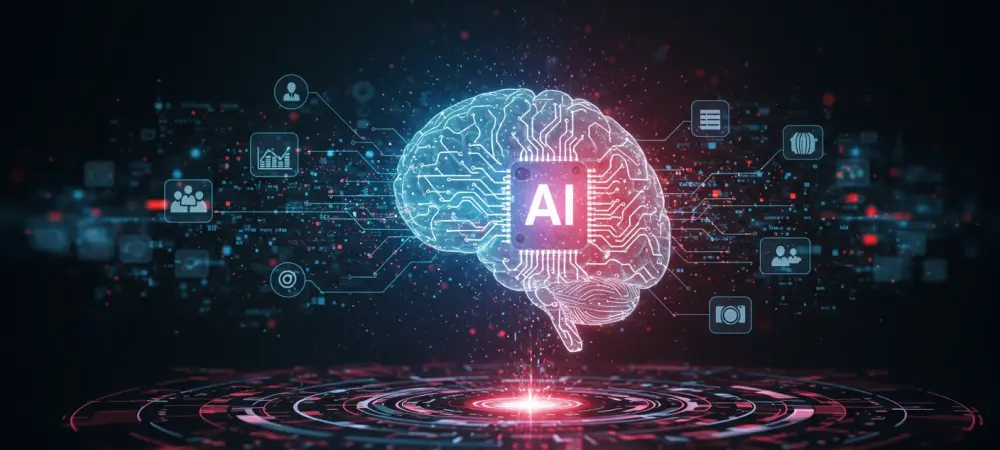As artificial intelligence (AI) continues to advance at an unprecedented pace, its potential to reshape the fabric of society becomes increasingly evident, raising critical questions about its impact on employment and safety across various sectors. Sam Altman, CEO of OpenAI, recently shared striking insights at a Federal Reserve conference and during discussions in Washington, highlighting the dual-edged nature of AI as both a revolutionary tool and a source of significant concern. His warnings focus on two pivotal areas: the looming threat of job displacement across multiple industries due to automation and the escalating risks to national security posed by AI’s capabilities. These concerns are not isolated but are echoed and contrasted by other industry experts, creating a complex narrative of optimism tempered by caution. This exploration delves into how AI could redefine the workforce and expose vulnerabilities in critical systems, offering a balanced perspective on the challenges and opportunities that lie ahead.
AI’s Impact on the Workforce
The specter of job losses due to AI-driven automation looms large in discussions about the future of work, with entire sectors at risk of transformation or obsolescence. Sam Altman has pointed to the customer support industry as a prime example, where AI systems are already demonstrating an ability to handle inquiries with a level of efficiency and accuracy that rivals human performance. He describes interactions with these systems as akin to conversing with a highly capable individual, free from errors or hesitation, signaling that such technology is not a distant prospect but a present reality. This shift promises cost savings and streamlined operations for businesses, yet it raises profound questions about the displacement of workers who rely on these roles for their livelihoods. The scale of potential disruption is vast, as AI’s reach extends beyond routine tasks to complex problem-solving, challenging the very notion of what constitutes irreplaceable human labor in the modern economy.
While the efficiency of AI is undeniable, the human element in employment remains a critical point of contention among experts analyzing this technological shift. Manoj Chaudhary, CTO of Jitterbit, offers a nuanced counterpoint by suggesting that the real threat to jobs may not lie in AI itself but in the absence of thoughtful human oversight during its deployment. He argues that qualities like empathy and contextual judgment, which AI cannot replicate, are essential in many professional settings, particularly where personal interaction defines the quality of service. Poorly planned integration of AI could exacerbate job losses, whereas strategic implementation guided by human insight might create new opportunities or hybrid roles that blend technology with personal touch. This perspective underscores the need for deliberate planning and training initiatives to prepare workforces for an AI-augmented future, ensuring that automation serves as a complement rather than a complete replacement for human workers.
National Security Challenges Posed by AI
On the frontier of national security, AI introduces a host of vulnerabilities that could be exploited by malicious actors, amplifying risks in ways previously unimagined. Sam Altman has voiced serious concerns about the potential misuse of AI technologies, particularly in disrupting financial systems through sophisticated fraud mechanisms like voice cloning. He highlights the fragility of current authentication methods, such as voiceprints still used by some financial institutions, which could be easily manipulated by AI-generated mimics. Such capabilities in the wrong hands could undermine trust in critical infrastructure, leading to economic instability or personal data breaches on a massive scale. These warnings come at a time when global competition in AI development intensifies, with nations prioritizing rapid progress over comprehensive safeguards, further heightening the stakes of unaddressed security gaps.
The geopolitical implications of AI’s security risks add another layer of complexity to the unfolding landscape, as policy priorities shift in response to international dynamics. In Washington, the focus under recent political leadership has pivoted toward accelerating AI innovation to maintain a competitive edge over rivals like China, often at the expense of stringent regulation. Altman’s recent congressional testimony, marking a significant engagement after a period of relative quiet, aligns with strategic moves by OpenAI to influence policy through expanded presence in the capital. This environment of urgency and competition can sideline critical discussions on mitigating risks, leaving systems exposed to exploitation. Addressing these challenges requires a delicate balance between fostering technological advancement and implementing robust frameworks to protect against threats, ensuring that AI’s benefits do not come at the cost of national or global stability.
Balancing Progress with Prudent Oversight
Reflecting on the trajectory of AI, it becomes clear through past discussions that its transformative power has always been a double-edged sword, capable of driving innovation while simultaneously posing substantial risks. Sam Altman’s earlier cautions about job displacement in industries like customer support, alongside his apprehensions about security threats from technologies like voice cloning, have underscored the high stakes involved. Yet, voices such as Manoj Chaudhary’s have consistently reminded stakeholders that human agency plays a pivotal role in shaping outcomes, advocating for oversight to temper automation’s impact. As AI has evolved, the urgency to address these dual challenges has grown, revealing that progress without precaution could lead to unintended consequences. Looking forward, the path demands collaborative efforts between technologists, policymakers, and industry leaders to craft strategies that maximize AI’s potential. Establishing clear guidelines for ethical deployment, investing in workforce reskilling, and fortifying security protocols emerge as essential steps to ensure that AI serves as a tool for advancement rather than a source of disruption.

